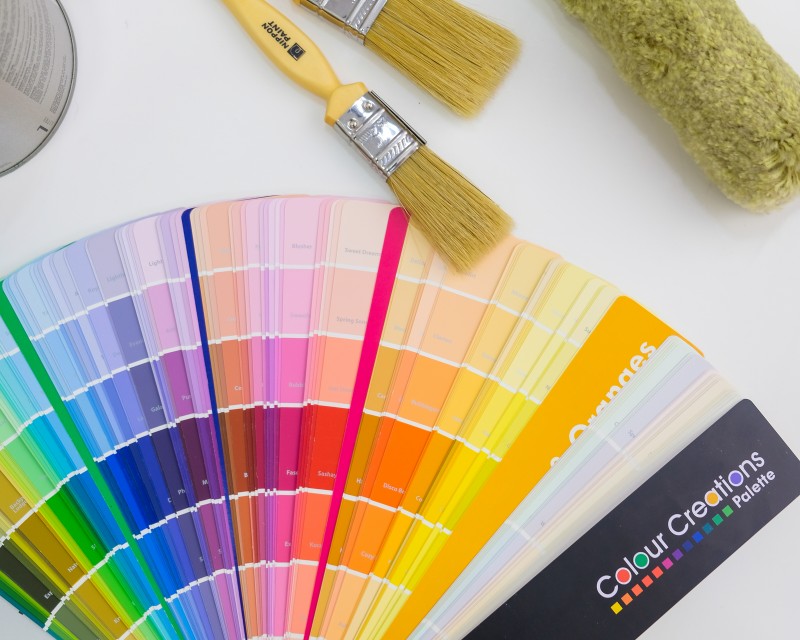
Paints come in many different types, from interior and exterior paints to wall, ceiling and furniture ones. Whether you’re moving into a new place or looking to spruce up your home, a fresh coat can do wonders to revamp the look of your living space.
Aside from choosing the colour to match the palette of your room, you’ll need to consider the type of paint you want. There are varying paint solvents, finishes and sheens suitable for different rooms in a home.
The sheer number of options may be daunting for some. But not to worry, read on to learn about the different types of paint out there and how to choose the best ones for your home!
Types of Paint Solvents
All paints are made with pigments, solvents, binders and additives. The combination of these results in various different characteristics and benefits.
Solvents (also known as vehicles or carriers) are the liquid elements that dissolve pigments in paint. When we refer to oil-based and water-based paints, we’re actually referring to the type of solvent the paint is composed of.
Oil-based Paint
Made up of natural oils or synthetic alkyds, an oil-based paint is most suitable for outdoor use and stained surfaces such as wood and metals that rust. They’re rarely used on interior walls.
| Pros | Cons |
|---|---|
|
|
Water-based Paint
Most interior wall paints in the market today are water-based. These include emulsion paints like acrylic, latex and vinyl. The main difference between these paints is the ratio of compounds each of them contains.
For example, acrylic paint contains a higher concentration of acrylic resin that helps to improve its performance and durability. As a result, modern water-based paints can also be used on trims and exterior surfaces such as roofs and walls.
| Pros | Cons |
| ● Safer as they don’t give off toxic fumes or unpleasant smells
● Much easier to apply as compared to oil-based paints ● More efficient as they have shorter drying times ● Spills can be easily cleaned with just soap and water |
● Less durable than oil-based paints
● High quality water-based paint can be more expensive |
Types of Paint
The types of paint you use indoors vary greatly from the ones outdoors as they’re made with different purposes in mind. Here are the various characteristics of interior and exterior paints!
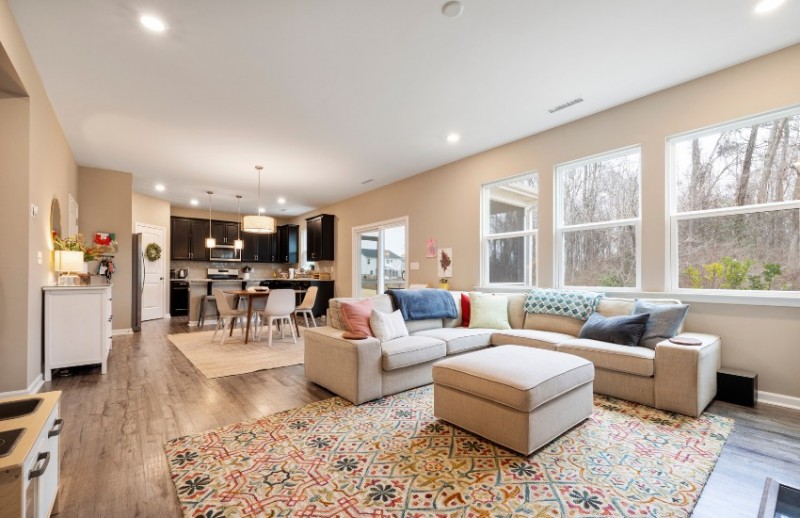
Interior Paint
Interior paints are made to resist staining and abrasions from scrubbing and cleaning. They’re typically made with low amounts of volatile organic compounds (VOCs), such as formaldehyde, to keep the indoor air quality safe to be in. There are also near zero VOC paints like Odour-less All-in-1 that are odourless, benefitting both people and the environment!
In the market, they’re available in a wide variety of colours and levels of sheen, with various innovative features. These include ease of washing, mosquito repelling and anti-bacterial properties.
Exterior Paint
Specially designed for outdoor walls and roofs, exterior paints are formulated to withstand harsh conditions like heavy rainfall and strong sunlight. They don’t crack or fade easily, and they usually have anti-fungal and anti-mildew properties.
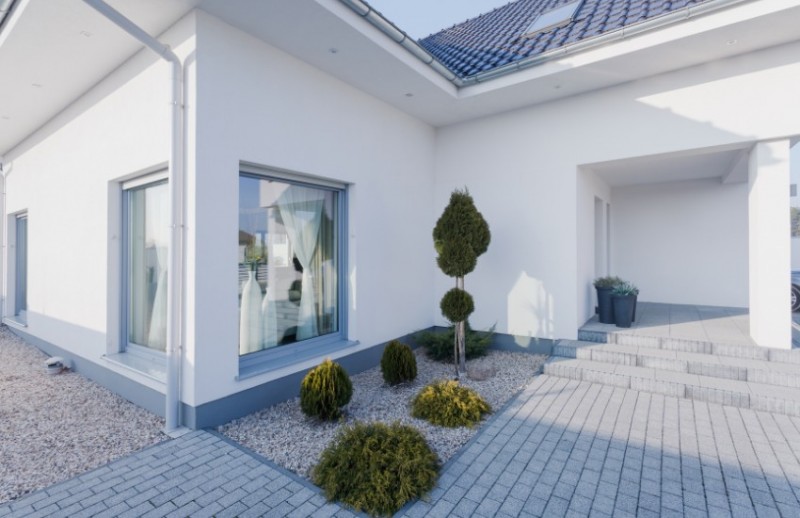
As exterior paints release higher levels of VOCs, they’re not as suitable for use indoors. You may recognise these compounds from the strong smell they emit.
Types of Paint for Different Materials and Surfaces
There are many ways to spruce up a home, from choosing different paint colours for your walls to refreshing the look of old furniture. You’ll also have to decide between paints for different materials and surfaces to get the most desired outcome. Here are the most common ones.
Wall Paint

Wall paint largely has the same properties as interior paint. They’re tough against stains and are easy to clean. They’re usually made to be highly durable to last you many years, and many of them are resistant to cracks.
As they’re made for decorative purposes, they come in a huge range of different finishes and sheens, ranging from matte to glossy. Aside from providing aesthetic appeal, these variations often have different individual properties as well.
Features:
- High durability
- Adheres easily to walls
- Made for aesthetic appeal
- Available in various colours, finishes and sheens
Ceiling Paint
Ceiling paints are thicker (more viscous) than wall paints, ensuring there’s less mess made when you’re rolling or brushing it on. They’re great at withstanding staining and soiling from smoke and cooking fumes, and are tough against mildew.
Features:
- Provides a uniform surface to conceal stains
- Doesn’t peel or crack
- Doesn’t drip during application
- Doesn’t highlight imperfections due to its flat finish
Furniture Paint
While you can use latex or water-based acrylics to paint furniture, there are also specific wood and metal paints you can use. These paints have added features that make them most suitable for use on these furniture surfaces.
Wood Paint
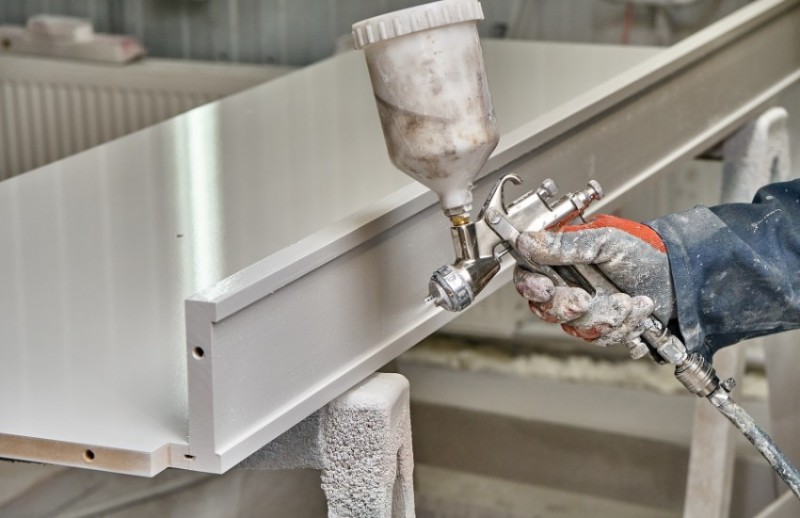
Wood paints are used to protect and enhance the look of wooden items and furniture. They offer a layer of resistance against moisture and mould. You can get coloured variations to switch up your room’s aesthetic, or amp up the woodiness with a shade of brown.
Features:
- Offers high level of weather protection
- Variety of colours available
- Enhances natural wood grain
- Resists the growth of mould
Metal Paint
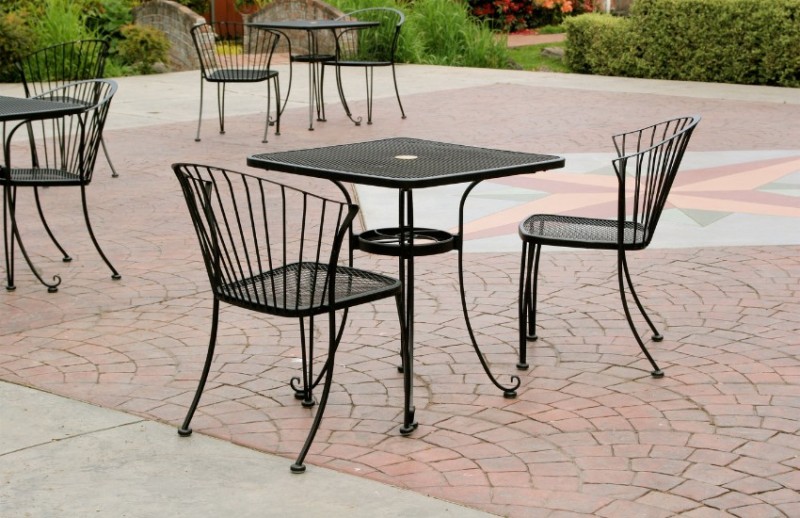
Metal paints are specially formulated to resist corrosion and rust. You’ll be able to find both water-based acrylic and oil-based variants. They’re great for refurbishing older furniture as they often come in a variety of attractive colours with metallic finishes.
Features:
- Suitable for interior and exterior surfaces
- Corrosion resistance
- Rust coverage
- Available in various colours and finishes
Types of Paint Finishes and Sheen
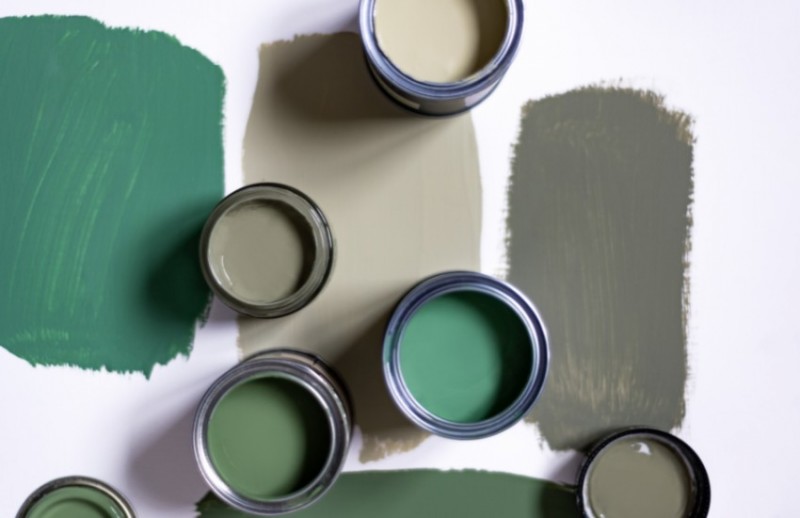
The main types of paint finishes vary in terms of glossiness, otherwise known as sheen. The higher the glossiness, the more durable the paint usually is. However, it also means less pigmentation which makes wall imperfections more obvious.
The different sheens from least to most glossy are flat or matte, eggshell, stain, semi gloss and gloss.
Flat or Matte Paint
Suitable for:
- Living room
- Study room
- Bedroom
A flat or matte paint, like the Nippon Paint Vinilex 5000, is the most affordable basic paint option. They’re highly pigmented, making them great for covering any wall stains.
While the terms ‘flat’ and ‘matte’ are sometimes used interchangeably, matte paint offers slightly more sheen and durability than flat paint.
| Pros | Cons |
| ● Cost-effective paint for interior spaces with less traffic
● Hides imperfections on walls |
● Relatively lower durability
● Low moisture and scratch resistance ● Relatively harder to clean ● Doesn’t provide much texture |
Eggshell Paint
Suitable for:
- Living room
- Dining room
- Bedroom
A slightly more durable yet affordable option would be an eggshell paint like the Nippon Paint Easy Wash. It has relatively low sheen compared to other finishes, but is more lustrous than matte paint.
It also doesn’t pick up dirt easily and an extra coat can hide blemishes on walls, making it a practical choice for living rooms and other medium-traffic areas in your home.
| Pros | Cons |
| ● Cost-effective
● Hides imperfections on walls ● Higher durability than matte paint ● Relatively easier to clean than matte paint ● Has some sheen and texture |
● Lower durability than satin paint
● Relatively lower moisture and scratch resistance |
Satin Paint
Suitable for:
- Living room
- Bedroom
- Kids’ room
- Kitchen
- Bathroom
Satin paints provide an eye-catching and attractive sheen. This is the go-to paint for most homeowners as they’re durable and stay vibrant for many years. It’s very versatile and is commonly used for both walls and trims.
An example of a satin paint would be the Nippon Paint Vinyl Silk.
| Pros | Cons |
| ● Cost-effective
● Higher durability than eggshell and matte paint ● Moderate moisture and scratch resistance ● Relatively easy to clean than eggshell and matte paint ● Has an attractive sheen and texture |
● May highlight imperfections on walls
● Lower durability than glossier paints |
Semi Gloss Paint
Suitable for:
- Kitchen
- Bathroom
- Kids’ room
- Highlighting certain home features
Like satin paint, semi-gloss paint offers high durability and resistance to moisture and scrubbing. However, due to the slightly higher sheen, it’s usually used in smaller doses to highlight certain home features. Nippon Paint Bodelac 9000 comes in a semi gloss option (do take note that this product is only applicable to wood and metal surfaces.)
| Pros | Cons |
| ● High durability
● High moisture and scratch resistance ● Easy to clean ● Has high sheen and a slick finish |
● Relatively more costly
● Highlights imperfections on walls |
Gloss Paint
Suitable for:
- Exterior surfaces
- Window trims
- Doors
- Other high-contact areas
High gloss paints have an almost mirror-like shine to them. Due to this, they’re not commonly used for walls at home. However, they can be used on interior and exterior metal and wood surfaces such as window trims and doors.
The Nippon Paint Aqua Bodelac is an example of a gloss paint.
| Pros | Cons |
| ● High durability
● High moisture and scratch resistance ● Easy to clean |
● Relatively more costly
● Highlights imperfections on walls ● Has a sheen that may be too strong for room walls |
What Type of Paint Should You Use for Each Room
Now that we know about the various types of paints available, here’s a rundown of the best ones to use for each room in the house!
Best Type of Paint for Kids Room
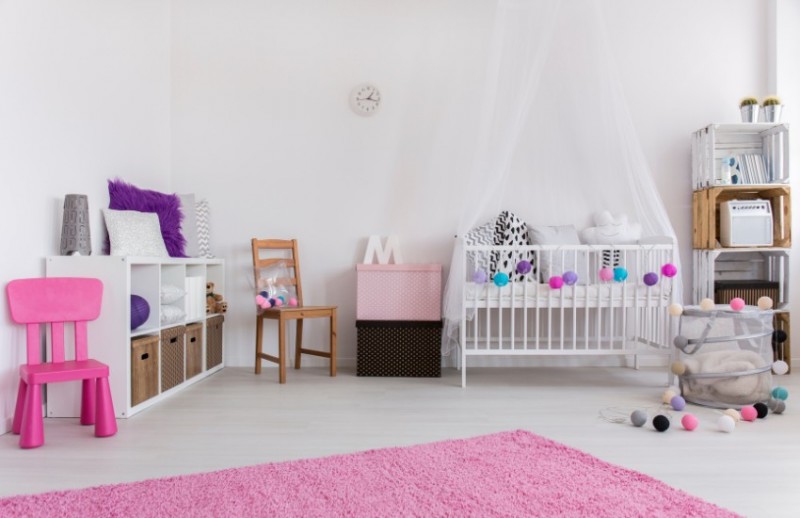
Kids sometimes express their creativity by drawing on the wall. Therefore, you’ll want to be able to clean the walls easily without worrying about the paint fading. It’s best to choose an odourless paint that’s durable and slightly glossy so it’s easy to clean!
Types of paint to avoid
- Solvent: Oil-based
- Type: Outdoor
- Sheen: Flat/matte
Most suitable types of paint
- Solvent: Water-based
- Type: Indoor
- Sheen: Satin or semi-gloss
- Properties: Durable, Odourless, Easy to clean
Best Type of Paint for Kitchens
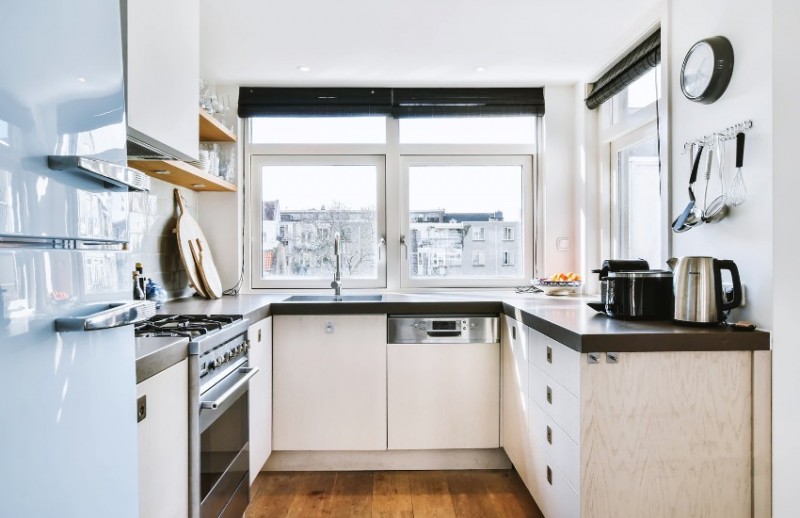
Since kitchens are exposed to cooking fumes and splatters, you’ll want to opt for higher sheen paints as they’re easy to wash and maintain. A durable, anti-mould wall paint is also ideal, since this is a highly functional room that’s often exposed to moisture.
For greater durability, oil-based paints are commonly used. Depending on the product, water-based options are sometimes preferred as some tend to give off lower VOC emissions.
Types of paint to avoid:
- Type: Outdoor
- Sheen: Flat/matte, eggshell
Most suitable types of paint:
- Type: Indoor
- Sheen: Satin, semi-gloss
- Properties: Anti-mould, not easily stained, easy to clean, durable
Best Type of Paint for Bathrooms
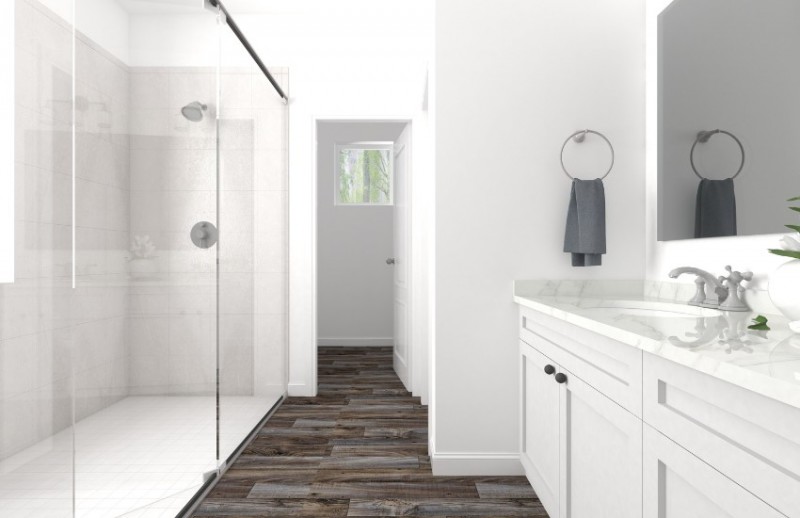
Though tiles or panels are more commonly used in bathrooms, a moisture-resistant paint can be used to spruce up the look of the space too. A glossier choice is optimal, as these don’t absorb water as much, and are way easier to keep clean.
Types of paint to avoid:
- Type: Outdoor
- Sheen: Flat/matte, eggshell
Most suitable types of paint:
- Type: Indoor
- Sheen: Satin, semi-gloss, gloss
- Properties: Anti-mould, moisture-resistant, easy to clean
Best Type of Paint for Living Room and Bedrooms
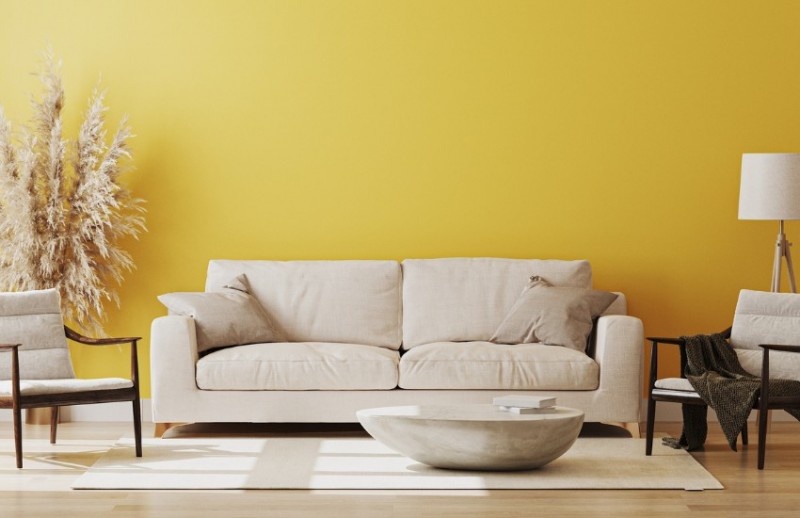
When choosing designs for your living spaces, you can create certain moods with the paints you select. To do this, you may opt for the best palettes or two colour combinations for your living room and bedroom walls. You can also create a more vibrant space with glossier walls, or go for a sophisticated matte look.
The possibilities are endless since walls in these rooms require less durability, letting you get by with the most cost-effective basic paints.
Types of paint to avoid:
- Solvent: Oil-based
- Type: Outdoor
Most suitable types of paint:
- Solvent: Water-based
- Type: Indoor
- Sheen: Flat/matte, eggshell, satin, semi-gloss
- Properties: Aesthetically-pleasing, hides wall imperfections
Creating Your Dream Home with Different Types of Paint
Different types of paint have different functionalities and aesthetic appeals. Whether you’re livening up the look of your home walls or refurbishing an old piece of furniture, there’s a paint for it. We hope this guide helps you decide on the best one for your space!
For top-notch paints of all types, choose Nippon Paint Singapore!
13 Trending Two Colour Combinations for the Living Room in 2023
